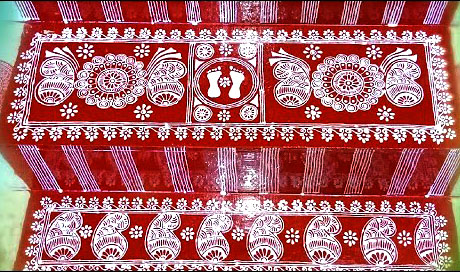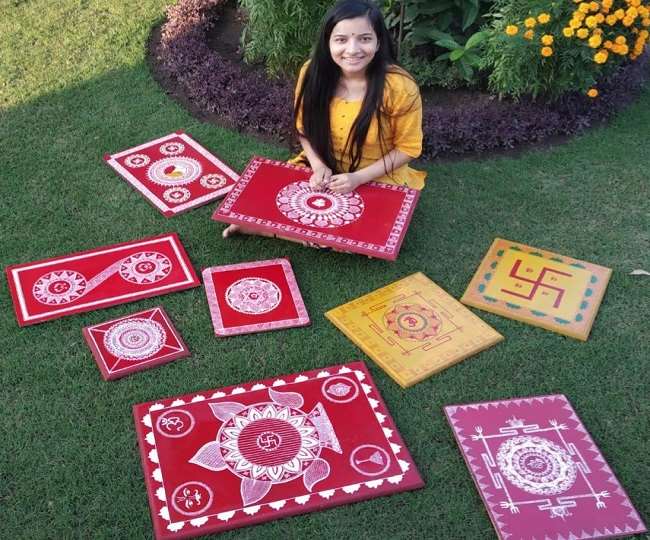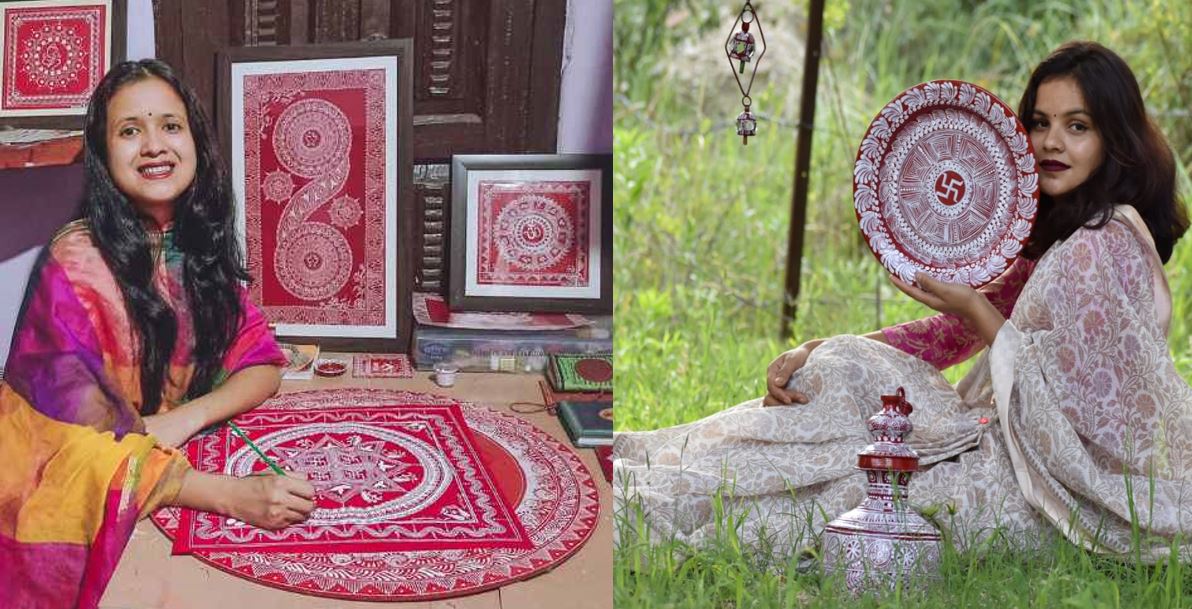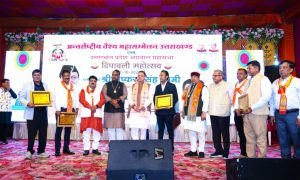Haldwani: Folk arts are not merely forms of art; their significance extends far beyond. In the land of the gods, it is impossible to discuss folk arts without mentioning Aipan. However, the Aipan art form has somewhat faded. Young people are making vigorous efforts to revive it, providing a path to restore its former glory. Today, we will delve deeply into Aipan art.
What is Aipan?
The term ‘Aipan’ is derived from the Sanskrit word ‘Arpan,’ which means ‘to write.’ It is a rich and dignified tradition of Kumaon. This cultural tradition can be seen in almost every household in Kumaon. This painting style involves creating Rangoli with various colors, often reflecting nature.

Types of Aipan
Several types of Aipan are made, such as daily Aipan, Pith, and designs related to ceremonies. Some are ornamental pictures like Likh-Thap-Patta. Notably, there are various forms of Aipan art across India, known as Sathiya in Gujarat, Chowk Puran in Uttar Pradesh, Alpana in Bengal, and Attapan in Bihar, among others.

Religious Significance of Aipan
Aipan art is integral to every festival, auspicious occasion, religious ceremony, and sacred event like naming ceremonies, weddings, and thread ceremonies in Kumaoni homes. It is believed to develop divine power, protect from evil, and bring good fortune to the family. Aipan is created on floors, walls, house entrances, worship rooms, and especially in temples of deities.

Traditional Method of Making Aipan
Traditionally, Aipan is made using Gheru (red ochre soil) and Biswaar (rice paste). Gheru is a vermilion-colored soil soaked in water to create the base for Aipan. After preparing the base, designs are created with Biswaar using the last three fingers of the right hand. These designs include geometric patterns, Swastika, conch shells, the sun, the moon, floral patterns, and the footprints of Goddess Lakshmi, symbolizing various religious beliefs and natural resources. Nowadays, synthetic enamel paint and acrylic colors are also being used.
Places Where Aipan is Made
Aipan is made to decorate floors, walls, house entrances, worship rooms, and temples. It is also used to paint wooden platforms (used as seats for deities). Recently, Aipan art is seen on clothing, canvas paintings, diaries, coffee mugs, bags, trays, nameplates, and other items.
Heritage of Aipan
The preservation and transmission of traditions depend significantly on upbringing. Mothers in the land of gods ensure their children, especially daughters, stay connected to local culture. Young people who have preserved this art credit their mothers and elders for their inspiration.
Challenges Facing Aipan Art
Migration has affected Uttarakhand’s villages, with people moving to larger cities. As a result, traditional folk art is not reaching new generations, leading to the art’s decline. Many children are unaware of Aipan. Modernization has also diverted folk art. Stickers have replaced the tradition of creating Aipan at home. Therefore, it is essential to encourage and support young people engaged in preserving this art to ensure its heritage, emotions, and cultural beliefs continue.
Young People Advancing Aipan Art
Not all young people are distant from Aipan art. Some are setting examples by making Kumaoni Aipan popular in villages, towns, and cities. Young artists like Hemlata Kabdwal, Meenakshi Khati, Neha Arya, Pooja Padiyar, Shikha Pandey, Deeksha Mehta, Dr. Savita Joshi, and Nishu Punetha are experimenting with Aipan as a hobby or profession. Modern young women are integrating Aipan with contemporary fashion, creating it on silk sarees, canvas, nameplates, and more, generating employment and breathing new life into folk art. It is essential to support and help these young artists move forward.













